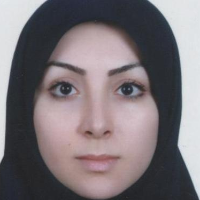Study of the Statistical Relationship Between the Iranian Journals Citation Index (JCI) and Some Scientometric Indices in JCR 2020
The main objective of this research is to rank Iranian-indexed journals in the Journal Citation Reports (JCR) 2020 based on the Journal Citation Index (JCI). Additionally, the study aims to investigate the significant correlation between the JCI and other metrics such as Eigenfactor, Article Influence Score (AIS), Quartile, and Journal Impact Factor (JIF). Among them, forty Iranian journals are indexed in three main citation indexes and have received Journal Impact Factor (JIF) and Quartile rankings for the first time, which also reported their Journal Citation Index (JCI). However, the ranking of these Iranian journals based on the new JCI is not specified. More importantly, the study does not examine the significant correlation between JCI and other indices such as Eigenfactor, AIS, Quartile, and JIF. Therefore, this research aims to rank Iranian journals indexed in JCR 2020 based on the Journal Citation Indicator (JCI) and investigate the significant correlation of this index with Eigenfactor, Article Influence Score (AIS), Quartile, and Journal Impact Factor (JIF). The main focus of this research is to determine whether changes in the value of the new index (JCI) will correspond to changes in the old indices (Eigenfactor, AIS, Quartile, and JIF). Therefore, this article aims to investigate the mentioned issues and provide scientific and accurate answers.
The present research is applied and has been conducted using scientometric indices and an analytical approach. The required data for the research was extracted from JCR 2020. All Iranian journals in JCR 2020 with an Impact Factor (IF) and Quartile, totaling forty journals, formed the research population. In this article, five research questions have been posed. Iranian journals and their corresponding indices were extracted from JCR 2020. They were then ranked and reported in a table based on JCI to address the first question. To address the second to fifth research questions, which investigate the significant relationship between JCI and Eigenfactor, AIS, Quartile, and JIF, the Shapiro-Wilk test was initially used to assess the normality of the distribution of the relevant data for Eigenfactor, AIS, Quartile, and JIF. The results of the Shapiro-Wilk test indicated that the data related to Eigenfactor and AIS followed a normal distribution, while the data related to JIF did not. Therefore, to investigate the significant relationship between JCI and Eigenfactor and AIS, the Pearson correlation coefficient was used. Additionally, to study the significant relationship between JCI and JIF, Spearman's rho correlation coefficient was employed. Additionally, when examining the relationship between JCI and Quartile, it is important to note that Quartile only has four levels (Q1, Q2, Q3, and Q4). Therefore, the Kendall's tau b test was used. This test is used when the data under investigation is on an ordinal scale.
"Iranian Journal of Fuzzy Systems," "International Journal of Health Policy and Management," and "BioImpacts" ranked first, second, and third, respectively, in JCI with scores of 65.1, 15.1, and 99.0. A positive and significant correlation between JCI and Eigenfactor (R=44.0, P<0.006) indicates a statistical relationship. There is a positive and significant correlation between JCI and Article Influence Score (AIS) (R=73.0, P<0.0001), suggesting that an increase in JCI is associated with an increase in AIS. There is a negative and significant correlation between JCI and Q (R=-64.0, P<0.0001), implying that an increase in JCI is associated with a decrease in Q. In summary, the results suggest that JCI is positively related to Eigenfactor and AIS but negatively related to Q. These findings can have implications for evaluating the impact and influence of academic journals.
The JCI can be a complementary indicator with the JIF. Many indicators have been introduced to cover JIF's weaknesses, but JIF is still the most famous indicator. The passage of time will show that the JCI will also suffer the fate of the previous indicators or, as a new and unique indicator, will remove the authority and acceptance of the JIF after half a century.
- حق عضویت دریافتی صرف حمایت از نشریات عضو و نگهداری، تکمیل و توسعه مگیران میشود.
- پرداخت حق اشتراک و دانلود مقالات اجازه بازنشر آن در سایر رسانههای چاپی و دیجیتال را به کاربر نمیدهد.



